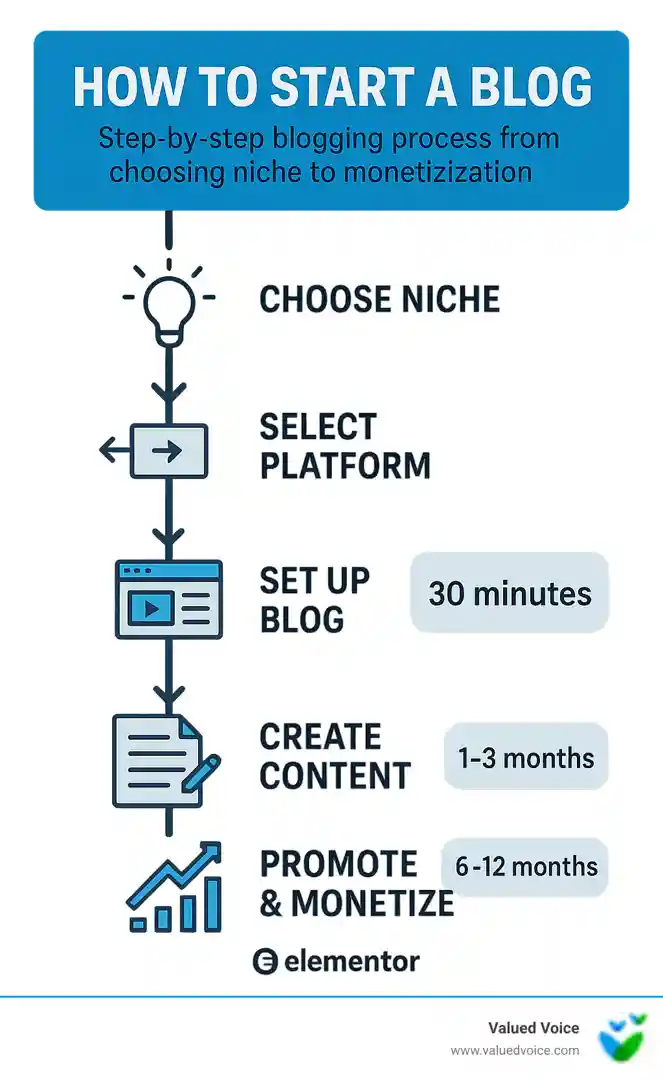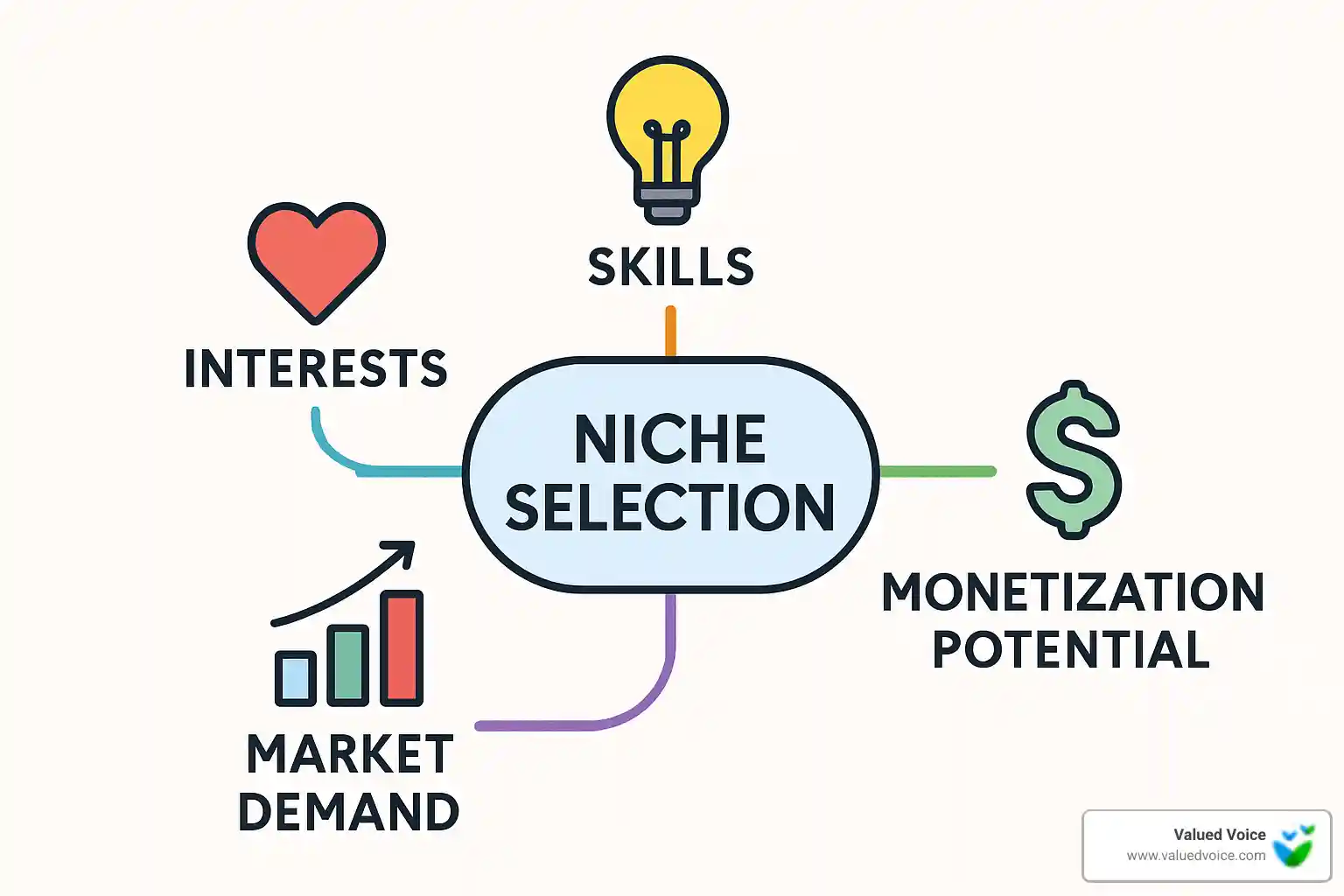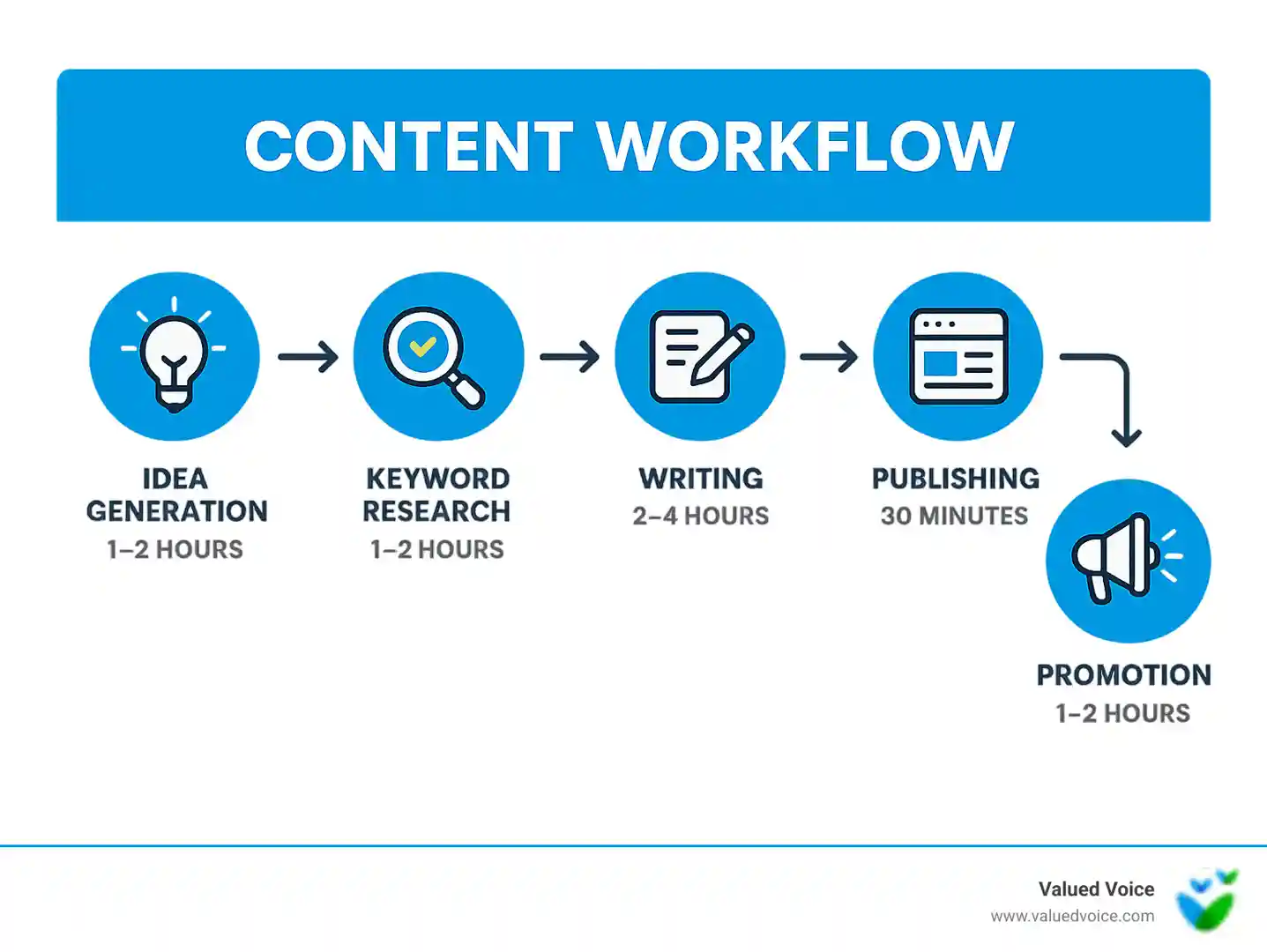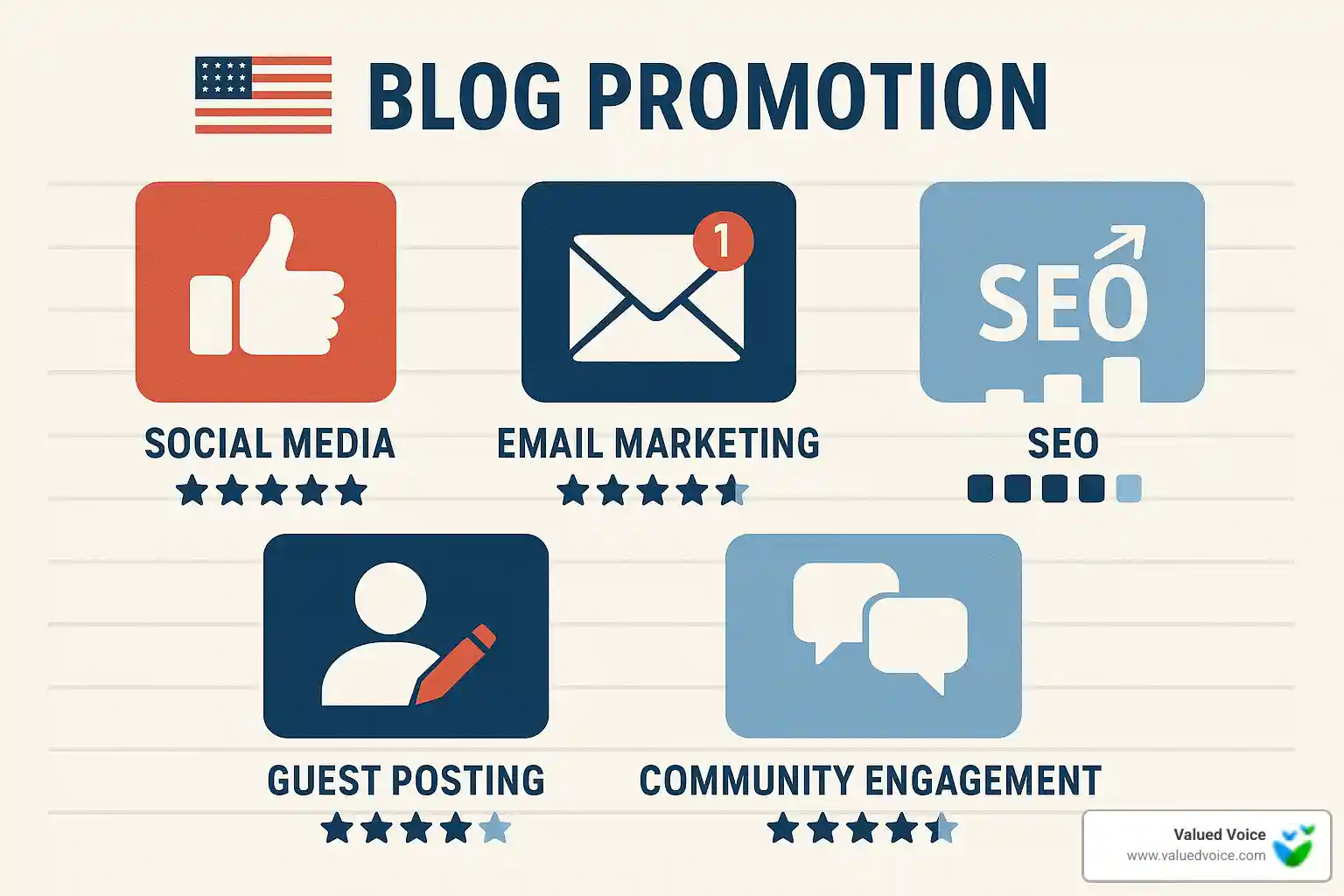Why Starting a Blog is Easier Than You Think (But Still Requires the Right Steps)
Jun 27, 2025
Written by Casey Bjorkdahl


Learning how to start a blog no longer demands deep technical skills or big budgets. With modern tools, you can publish your first post in a single afternoon—the trick is simply following the right sequence.
Quick Answer: How to Start a Blog in 6 Essential Steps
- Choose your niche – pick a focused topic you enjoy that also has earning potential
- Select a platform – WordPress.org for full control, or an all-in-one hosted option for maximum simplicity
- Get hosting & a domain – reliable shared hosting plus a .com typically costs under $65 for the first year
- Design your blog – install a clean theme, add indispensable pages (About, Contact), and keep it mobile-friendly
- Create content – publish your first helpful post and give it a basic SEO tune-up
- Promote & monetize – share on social platforms, grow an email list, then layer on revenue streams
More than 31.7 million blogs exist in the United States alone, proving that ordinary people really do turn ideas into published websites every day. The difference between blogs that thrive and those that stall is not luck—it’s having a clear roadmap and sticking with it longer than a few weeks.
Today’s software handles nearly all of the heavy technical lifting. One-click installs, drag-and-drop themes, automatic backups, and code-free email integrations mean you can launch a professional-looking site in under 30 minutes. What still takes effort is the human part: understanding a specific audience and showing up consistently with valuable information.
Whether you want to build authority in your field, earn side-income, or simply share a passion project, the following streamlined guide removes the guesswork and keeps you moving forward.

Decide on Your Purpose & Niche
Before touching any settings, decide why your blog should exist. Great blogs solve clear problems for clear groups of people. When you know who you’re helping and why, writing posts becomes dramatically easier.
What is a Blog & Why Start One?
A blog is a regularly updated website written in a conversational tone. In 2025 it remains one of the simplest ways to:
- Build credibility by showcasing expertise
- Express creativity without gatekeepers
- Earn income (average U.S. bloggers report $45 k/year)
- Grow community around shared interests
- Generate leads – 53 % of web traffic begins with a search engine
Choose the Perfect Niche Without Overthinking
Use the simple formula: Passion + Knowledge + Market Demand = Viable Niche.
Ask yourself:
- Which topics make you lose track of time?
- What problems do friends already ask you to solve?
- Which challenges have you personally overcome?
Validate short-listed ideas in Google Trends and in real-world communities (Reddit, Facebook groups, etc.). Look for steady or rising interest and clear questions people still struggle with.
Start narrow—"plant-based meal prep for beginners" beats a generic "food" blog every time. You can always broaden later once an audience forms.

According to scientific studies, 53 % of all website visits come from organic search, so answering specific queries is your fastest route to free traffic.
How to Start a Blog: Domains, Hosting & Platforms
This part turns your idea into something people can actually visit. Think of it as choosing the land and street address for your online home.
Pick the Right Platform
For most serious bloggers, self-hosted WordPress.org offers the best blend of freedom, scalability, and price—roughly $35–$65 for your first year including hosting and domain.
Other solutions include hosted website builders or newsletter-first platforms. They are quicker to set up, but they limit customization, design control, and sometimes how you can earn money. If long-term growth and full ownership matter to you, WordPress.org remains the clear winner.
Register a Memorable Domain
- Keep it short, easy to spell, and brandable
- Aim for a .com if available
- Skip hyphens and numbers
- Add privacy protection during checkout so your personal data stays private
Web Hosting 101 – Speed, Security & Support
Good hosting keeps your site online, fast, and safe. Look for:
- 99.9 % uptime or better
- Free SSL certificate (gives the padlock and "https")
- Automatic daily backups
- 24/7 human support
- Easy, one-click WordPress installation
Reliable shared hosting plans start around $5/month, which is usually plenty until your traffic grows into the tens of thousands.
| Feature | Self-Hosted WordPress | Hosted Site Builder | Newsletter-First Platform |
|---|---|---|---|
| Estimated Cost | $35–$65/year | $0–$25/month | Free–$10/month |
| Customization | Complete control | Moderate | Minimal |
| Monetization Limits | None | Varies | Built-in subscriptions only |
| Content Ownership | 100 % yours | Platform dependent | You own subscriber list |
The bottom line: choose the stack that matches your ambition, but remember you can always migrate later as your needs evolve.
Build & Customize Your Blog
With WordPress installed, it’s time to make the site look credible—without falling into the "tweak forever" trap.
Install & Tweak Your Theme Like a Pro
Pick a lightweight, mobile-ready theme such as Astra or GeneratePress. Change the colors and fonts to match your brand, upload a logo if you have one, and call it a day. Perfection can wait; content cannot.
Must-Have Plugins & Features
Limit yourself to a handful that cover the essentials:
- Yoast SEO – on-page optimization
- Wordfence – security and firewall
- UpdraftPlus – automated backups
- WPForms – contact forms
- Site Kit by Google – analytics
Too many plugins slow your site; start lean.
Mobile, Security & Maintenance
More than half your readers will come from phones. Always preview new pages on your own device. Keep WordPress and plugins updated, use strong passwords, and verify that your SSL certificate is active (look for the padlock). Ten minutes of monthly maintenance prevents hours of future headaches.
Craft Content & Hit Publish
Setting up was the easy part—now you need words on the page. Aim for consistent, helpful posts rather than elusive perfection.
Plan Your Content Calendar
Brainstorm 10–15 questions your audience keeps asking. Group related ideas into small "topic clusters" and schedule one post per week in a simple spreadsheet or Google Calendar.

Write & Optimize Your First Post
- Hook readers with a surprising stat or relatable pain point.
- Briefly introduce yourself and explain how your blog will help them.
- Deliver clear, actionable advice using short paragraphs, headings, and bullet lists.
- Add 1–3 relevant images (compressed for speed) and internal links to any related posts.
- Finish with a call-to-action inviting readers to comment or join your email list.
For SEO, place your main keyword naturally in the title, first paragraph, at least one subheading, and the meta description. Then hit Publish—real improvement comes from the next post, not endless polishing of the first.
Promote, Grow & Monetize Your Blog
A great post is useless if no one sees it. Promotion isn’t about spam—it’s about putting helpful content in front of the right people.

Drive Traffic with SEO, Social & Email
- SEO: Target long-tail questions, link related posts together, and submit your sitemap to Google Search Console.
- Social media: Choose two platforms where your audience hangs out, engage genuinely, and share each new article.
- Email: Offer a quick win (checklist, template, mini-guide) in exchange for an address, then send a short welcome sequence that links to your best work.
Grow Community & Authority
Reply to every early comment, guest post on complementary blogs, and join niche forums or groups. Collaboration beats competition—cross-promotions and interviews expose you to new readers faster than going it alone.
Monetization Roadmap
- Months 0–6: focus on traffic and trust
- Months 6–12: add affiliate links to products you already use, and consider non-intrusive ads
- After 12 months: launch digital products, consulting, or a membership area.
When you’re ready for sponsored collaborations, Valued Voice connects bloggers with brands while letting you set your own prices and receive fast payouts—all without sacrificing editorial control.
Frequently Asked Questions about How to Start a Blog
What does it cost to start and run a blog?
A self-hosted WordPress site typically runs $34–$65 for the entire first year (domain + basic hosting). After that, expect the same annual renewal plus any optional premium tools you choose.
Can I start for free and upgrade later?
Yes. Free blogging platforms are fine for testing ideas, but they limit design and income options. When you’re sure you enjoy blogging, migrating to self-hosted WordPress lets you own everything and grow without restrictions.
How long before I see traffic and income?
Most new blogs see noticeable organic traffic around month 3–6 and first earnings between month 6 – 12. Consistency and audience focus matter far more than luck.
Conclusion & Next Steps
You now have a streamlined plan for how to start a blog without the overwhelm. The only irreversible mistake is never hitting Publish.
This week:
- Pick a focused niche and register a matching .com
- Install WordPress, choose a simple theme, and write your introductory post
- Share it, collect the first email subscribers, and schedule next week’s article
Stay consistent, keep serving your readers, and monetize only after trust is firmly in place. When that time comes, Valued Voice can put your high-quality content in front of brands eager to pay for it—on your terms.
Your future audience is already searching for answers. It’s time to give them yours.
Join over 10,000 bloggers and content creators who are currently earning with Valued Voice!